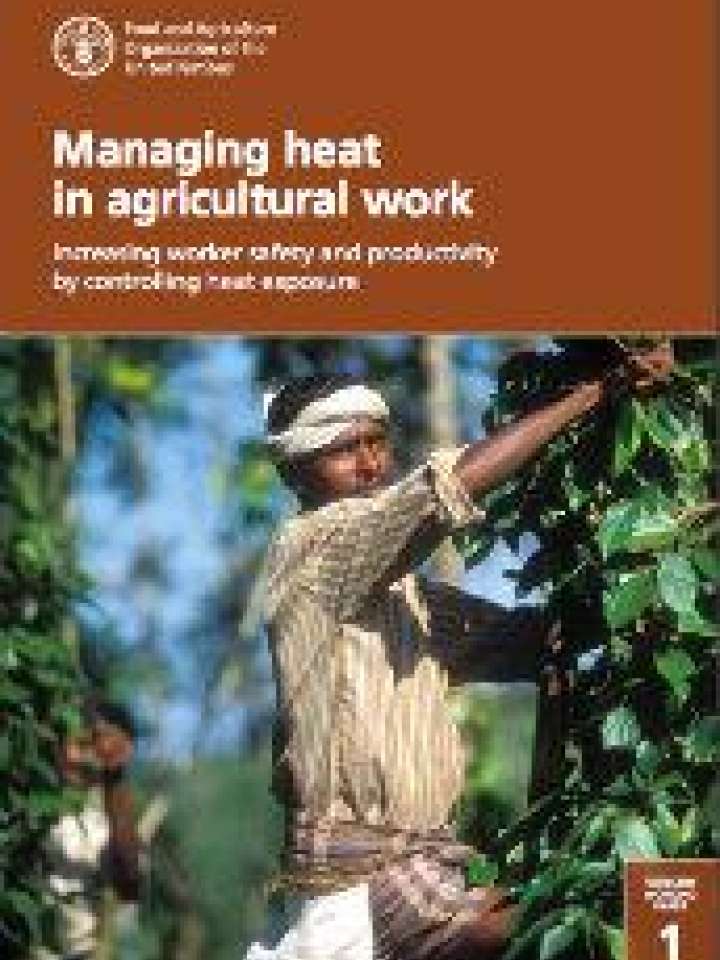Managing heat in agricultural work: Increasing worker safety and productivity by controlling heat exposure
This report reviews the implications of heat stress in working environments, how it affects the human body (both physically and mentally), the risks it poses to human health, how it is measured, how it affects labour productivity, and how it can be managed. Examples of heat stress in agriculture, including forestry, are given, drawn from the literature.
The report is aimed at managers in charge of agricultural operations, as well as at teachers in agricultural schools at different levels. The report is a contribution to the work of FAO in attaining SDGs 3 (good health and well-being) and 8 (decent work and economic growth). Indirectly, it supports work towards SDG 1 (no poverty) and SDG 10 (reduced inequalities), for which decent working conditions are important prerequisites. This report is part of FAO’s work in Sub-Programme on Rural Areas and International Labour Standards, which is part of Output 2.2 (“Application of International Labour Standards to Rural Areas”) of Organizational Outcome 2 (“Decent Rural Employment”) under Strategic Objective 3 (“Reduce Rural Poverty”).
Explore further
